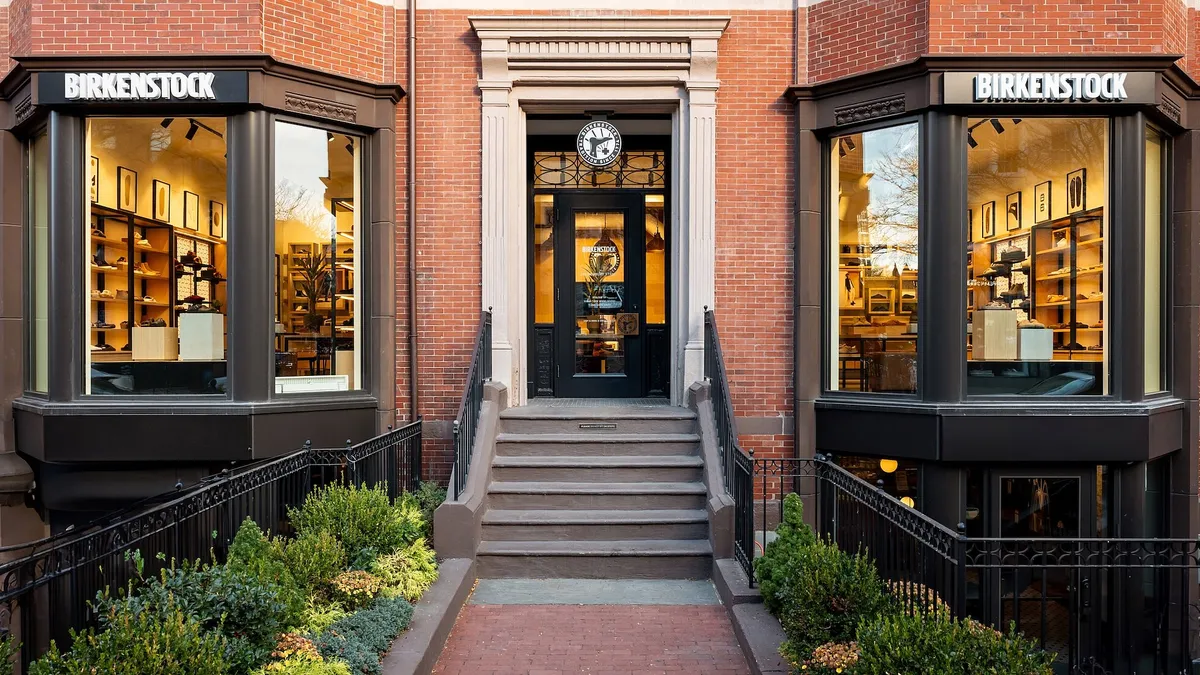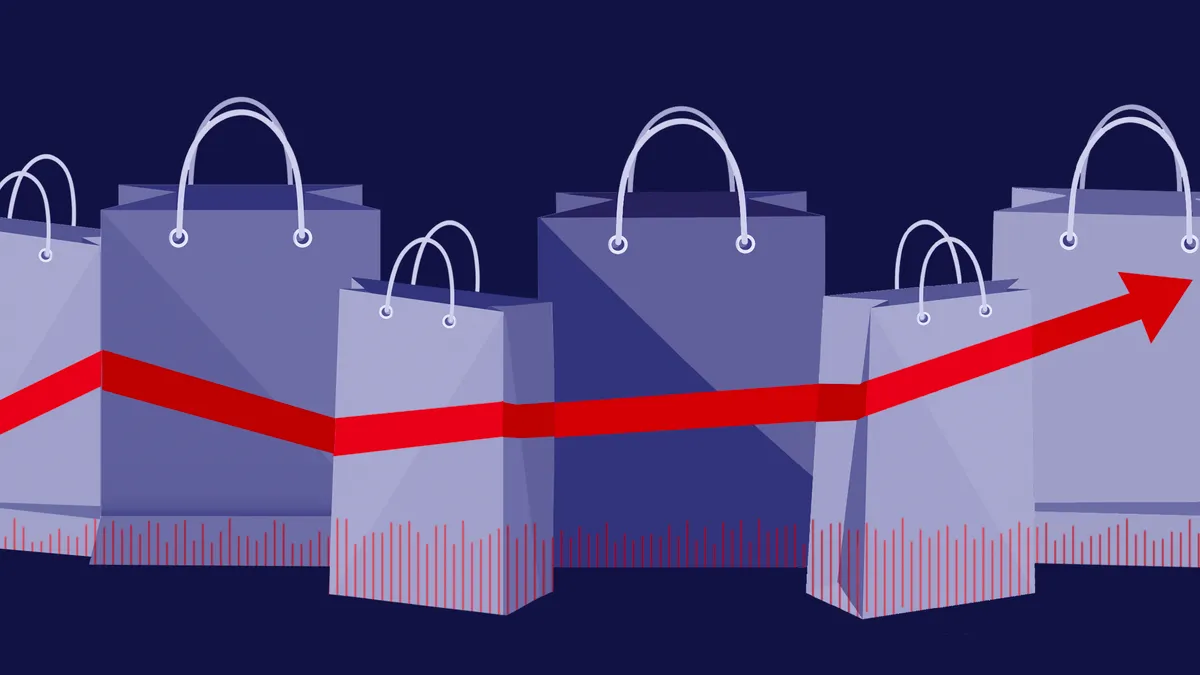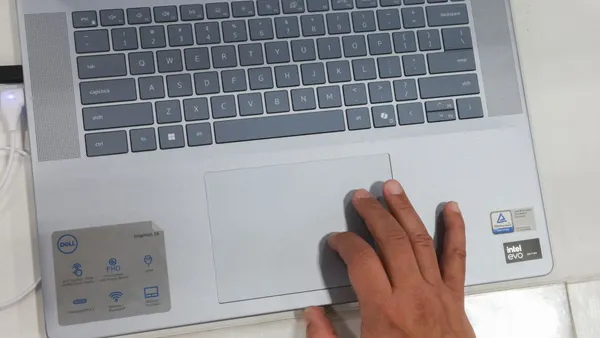Dive Brief:
- Noting strength in back-to-school shopping and wholesale, Birkenstock reported Thursday that Q3 revenue rose 12.4% year over year to 635 million euro (around $740 million at press time).
- Gross margin expanded by 100 basis points to 60.5%, while net profit surged 73% to 129 million euro (over $150 million).
- Wholesale revenue grew 15% and DTC grew 9%. Brick-and-mortar stores helped drive full-price selling, executives told analysts Thursday.
Dive Insight:
Neither tariffs nor currency headwinds did much to dent Birkenstock’s performance in Q3.
Speaking to analysts Thursday, executives called the current 15% baseline levy on European imports to the U.S. “manageable,” noting that they started the year with tariffs at 11% and spent some time with them at over 20%. In its release, the company reiterated its expectations for the full year: revenue growth at the high end of 15% to 17% in constant currency and adjusted EBITDA margin of 31.3% to 31.8%, “despite the strong depreciation of the US Dollar.”
To offset the impact of the U.S. levies, the company has raised prices in the U.S., negotiated with vendors, increased manufacturing efficiency and optimized its product mix, executives said.
Birkenstock’s advantages include “the enduring appeal of its iconic Arizona design, which provides strong brand durability and recurring/evergreen revenue,” according to Jefferies analysts led by Randal Konik, who also said in a Thursday client note that Birkenstock is poised to continue to beat expectations.
While the brand is working to grow its direct-to-consumer business, it owes much of its Q3 success to its retail partners.
“We think of [Birkenstock] as a great wholesale business and it overdelivered on wholesale ... despite a tough comparison and late start to warm weather season in the US & Europe,” Evercore ISI analysts led by Michael Binetti said in a Thursday research note.
Chief Financial Officer Ivica Krolo said that DTC is on track to accelerate in Q4, though wholesale will continue to outpace DTC for that quarter and the full year. The wholesale strength in Q3 was due largely to a growing trend toward in-store shopping, Krolo said. The company is stepping up the pace of its store openings in order to capture more of that in its DTC channel, which at the moment is mostly online.
“Our brand is a brand that benefits from physical shopping, where consumers can touch, feel, experience the footbed. It's a haptic product and especially so for those who are new to the brand and new to the footpath,” he said. “Our DTC business is still very much a digital platform, and with 90 doors globally, we are not able to capture all the in person demand within our DTC business.”














